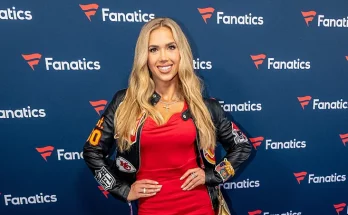Florida football significantly strengthens its 2026 class with the commitment of dynamic blue-chip ATH Justin Williams, a pivotal acquisition that immediately elevates the program’s recruiting trajectory and injects a substantial dose of optimism into Gainesville. This isn’t merely another verbal pledge; it represents a tangible shift in momentum, a validation of the coaching staff’s relentless efforts, and a clear signal to the collegiate football landscape that the Gators are aggressively pursuing and landing elite talent for their future. Williams, a highly coveted athlete whose versatility and explosive playmaking ability have drawn comparisons to NFL legends, embodies the very essence of what modern college football programs desperately seek: a prospect who can fundamentally alter the complexion of an offense or defense with his presence alone.
Justin Williams is not just a name; he is a statement. Hailing from Gainesville itself, his commitment carries an added layer of significance, representing a successful effort to keep premium in-state talent home – a critical component of any successful SEC program’s recruiting strategy. Dubbed a “blue-chip” recruit, Williams typically signifies a player ranked among the top prospects nationally, often possessing five-star or high four-star potential. His “ATH” designation underscores his rare ability to excel at multiple positions, a quality that makes him incredibly valuable in today’s increasingly positionless football. Whether lined up as a wide receiver, taking handoffs from the backfield, or even potentially contributing in the secondary, Williams possesses a rare blend of speed, agility, vision, and raw athletic power that allows him to create mismatches and produce explosive plays wherever he’s deployed. Reports highlight his remarkable achievement of accumulating over 1,000 rushing and 1,000 receiving yards in a single high school season, a feat rarely accomplished and one that immediately brings to mind the electrifying versatility of former Gator and NFL star Devin Hester. Such a statistical output is not just impressive on paper; it’s a testament to his innate ability to impact the game in every phase, showcasing a football acumen and physical prowess that translates directly to the highest levels of competition. This multi-faceted skill set means he’s not just filling one void; he’s providing a versatile weapon that can be strategically moved around the formation to exploit defensive weaknesses, making Florida’s offensive scheme far more dynamic and unpredictable in the coming years.
The immediate impact of Williams’ commitment on the 2026 recruiting class is profound. While early in the cycle, securing a talent of his caliber provides an undeniable boost to Florida’s overall class ranking and sends a clear message to other top prospects considering the Gators. In the hyper-competitive world of college football recruiting, momentum is currency, and a blue-chip commitment like Williams’ can create a powerful ripple effect. Other highly-rated players often look to see who else is joining a class, and the presence of elite talent can sway decisions. It validates the vision presented by the coaching staff and assures prospects that they will be surrounded by other top-tier athletes, fostering an environment conducive to winning and individual development. For a program aiming to climb back to national prominence, stacking high-end talent is non-negotiable, and Williams represents a significant step in that direction. His decision could easily serve as a catalyst, encouraging other sought-after recruits who might have been on the fence to strongly consider Gainesville as their future home, building a stronger foundation for a class that can genuinely compete for championships down the line.
Furthermore, Williams’ commitment underpins the strategic direction of Billy Napier’s tenure at Florida. From his arrival, Napier has emphasized a meticulous, process-driven approach to recruiting, focusing on identifying not just talent, but also character and cultural fit. Landing a local blue-chip prospect like Williams, especially one with his athletic profile, speaks volumes about the effectiveness of this approach. It demonstrates the staff’s ability to forge genuine relationships, overcome competition from other national powerhouses, and successfully articulate a vision for player development and team success that resonates with elite high school athletes. His commitment is a significant validation of Napier’s long-term plan, offering tangible evidence that the painstaking work behind the scenes is beginning to yield high-profile results on the recruiting trail. This success on the recruiting front is critical, as player acquisition is the lifeblood of any program striving for sustained excellence in the brutal SEC. Without a steady influx of four and five-star prospects, even the best coaching schemes will struggle to compete consistently at the highest level.
Beyond the immediate boost to rankings and the validation of a recruiting philosophy, Williams’ potential on-field contributions are immense. His dynamic capabilities suggest he could be a cornerstone player, a true game-changer who can turn routine plays into highlight reels. Whether as a primary target at wide receiver, a dangerous weapon out of the backfield on sweeps and screens, or even as a return specialist, his presence alone will demand extra attention from opposing defenses, potentially opening up opportunities for other players. The ability to create explosive plays is paramount in modern offenses, and Williams brings that innate knack to the Gators. His development within the program will be closely watched, as his raw talent combined with Florida’s resources for athletic and academic growth could transform him into a true collegiate star and future NFL prospect. The fan base, eager for a return to championship contention, will undoubtedly rally around such a promising local hero, infusing an additional layer of passion and excitement into game days.
In the broader context of the college football landscape, a commitment of this magnitude serves as a crucial step for Florida in reasserting its national relevance. The SEC is a shark tank, where every program is constantly battling for the same pool of elite talent. Successfully securing a blue-chip recruit over fierce conference rivals is not just a win for Florida; it’s a small but significant blow to competitors. It signals that the Gators are not content to merely compete; they are actively seeking to dominate the recruiting trail, especially within their own state, which consistently produces some of the nation’s most gifted athletes. This kind of recruiting success is the foundation upon which championship teams are built, allowing a program to recruit depth at every position and withstand the inevitable challenges of injuries and attrition. The commitment also offers a fresh narrative for the program, moving beyond past struggles and focusing squarely on a promising future built on the back of top-tier young talent.
However, the journey doesn’t end with a commitment. The next challenge lies in retaining Justin Williams until signing day and then, critically, developing his immense talent once he steps foot on campus. The modern recruiting landscape, particularly with the advent of Name, Image, and Likeness (NIL) opportunities and the transfer portal, means that verbal commitments are less binding than ever before. Florida’s staff will need to continue nurturing the relationship, ensuring Williams feels secure in his decision and excited about his future in Gainesville. Once enrolled, the focus will shift to maximizing his potential through expert coaching, strength and conditioning, and integration into the team’s schemes. Ultimately, recruiting success, while vital, must translate to on-field victories. The long-term vision is for Williams to not just be a highly-touted recruit, but a productive collegiate athlete who contributes significantly to Florida’s pursuit of conference and national championships. His commitment provides an invaluable building block, a testament to the program’s ascending trajectory and its renewed ability to attract the kind of talent necessary to compete at the very pinnacle of college football. This single pledge, therefore, reverberates far beyond a mere signature, heralding a new era of competitive aspirations for the Florida Gators.



